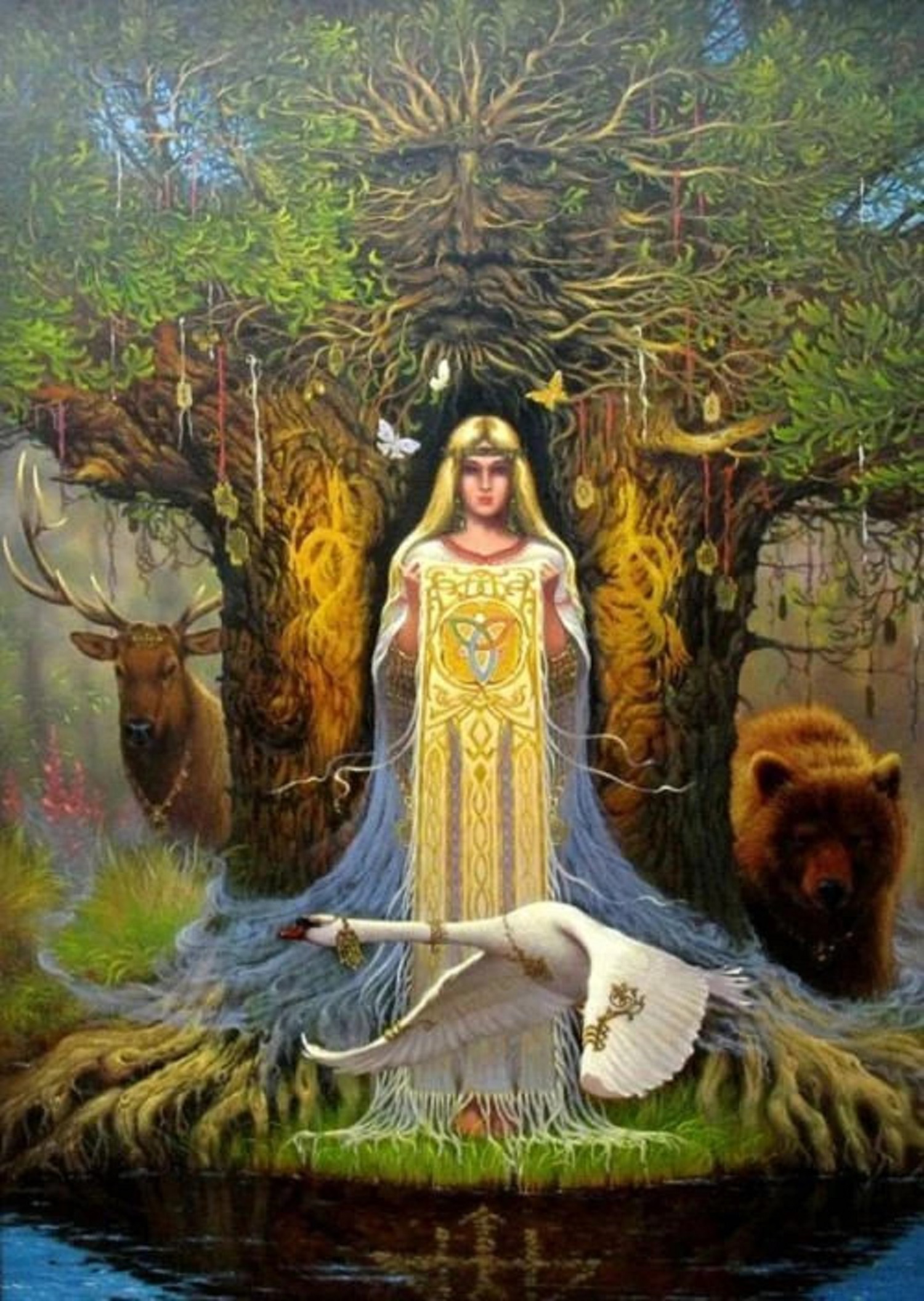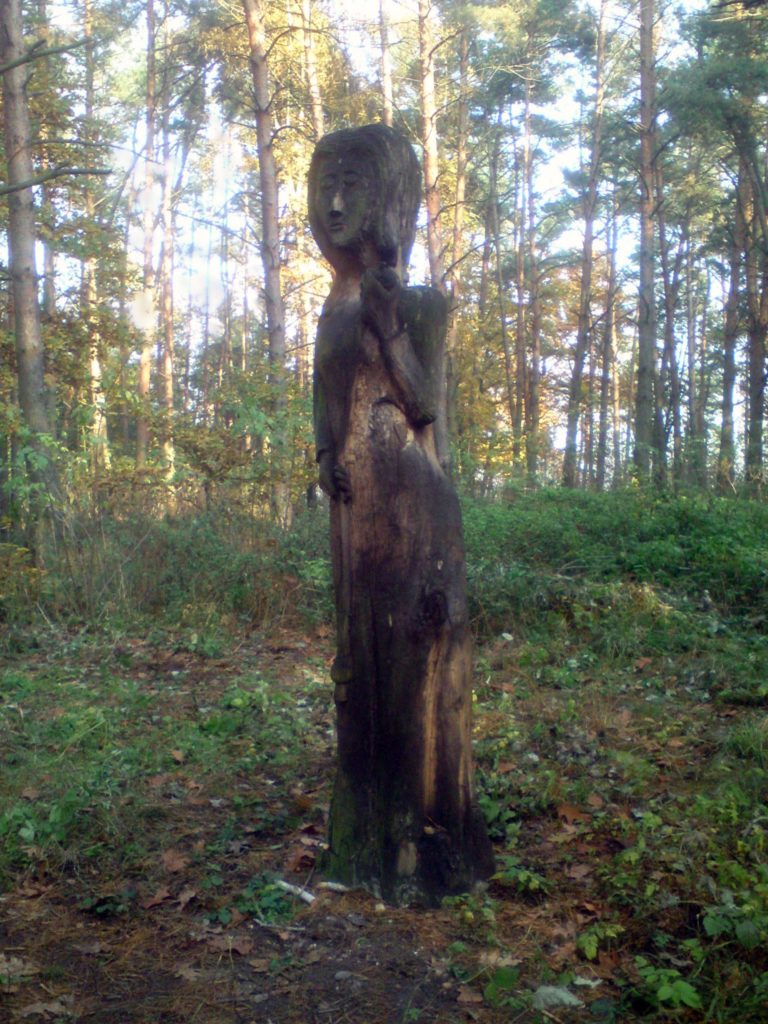
The Gods and Goddesses of the Slavic pantheon are ones I feel connected to and have studied for years. maybe due to having Slavic blood running through me or perhaps how they resonate with my beliefs and spiritual path. Either way I want to begin featuring each of the Slavic pantheon with posts on my blog here and I have decided to begin with the most important Goddess which is Mokosh (Mokoš). She is such an important Goddess among the Slavic pantheon that she is still revered to this day as she deserves.So let us get into all there is known about this Mother Goddess.
Getting to know Mokosh
There are seven primordial gods in Slavic mythology, and only one of them is female: Mokosh. In the pantheon in the Kievan Rus’ state, she is the only goddess at all, and so her specific role in Slavic mythology is vast and varied, and, more aptly perhaps, foggy and damp. Mother earth and house spirit, tender of sheep and spinner of fate, Mokosh is the supreme Slavic goddess.
In Slavic mythology, Mokosh, sometimes transliterated as Mokoš and meaning “Friday,” is Moist Mother Earth and thus the most important (or sometimes only) goddess in the religion. As a creator, she is said to have been discovered sleeping in a cave by a flowering spring by the spring god Jarilo, with whom she created the fruits of the earth. She is also the protector of spinning, tending sheep, and wool, patron of merchants and fishermen, who protects cattle from plague and people from drought, disease, drowning, and unclean spirits.
The origins of Mokosh as mother earth may date to pre-Indo-European times (Cuceteni or Tripolye culture, 6th–5th millennia BCE) when a near-global woman-centered religion is thought to have been in place. Some scholars suggest she may be a version of Finno-Ugric sun goddess Jumala.
In 980 CE, Kievan Rus emperor Vladimir I (died 1015) erected six idols to Slavic gods and included Mokosh in 980 CE, although he took them down when he converted to Christianity. Nestor the Chronicler (11th century CE), a monk at the Monastery of the Caves in Kyiv, mentions her as the only female in his list of seven gods of the Slavs. Versions of her are included in the tales of many different Slavic countries. SOURCE
Appearance and Reputation
Surviving images of Mokosh are rare—although there were stone monuments to her beginning at least as long ago as the 7th century. A wooden cult figure in a wooded area in the Czech Republic is said to be a figure of her. Historical references say she had a large head and long arms, a reference to her connection with spiders and spinning. Symbols associated with her include spindles and cloth, the rhombus, and the Sacred Tree or Pillar.
Some Slavic peasants felt it was wrong to spit on the earth or beat it. During the Spring, practitioners considered the earth pregnant: before March 25 (“Lady Day”), they would neither construct a building or a fence, drive a stake into the ground or sow seed. When peasant women gathered herbs they first lay prone and prayed to Mother Earth to bless any medicinal herbs. SOURCE
Key Takeaways: Mokosh
- Associated Deities: Tellus, Ziva (Siva), Rusalki (water nixies), Lada
- Equivalents: St. Paraskeva Pianitsa (Christian Orthodox); loosely comparable to the Greek Titan Gaia, Hera (Greek), Juno (Roman), Astarte (Semitic)
- Epithets: Goddess Who Spins Wool, Mother Moist Earth, Flax Woman
- Culture/Country: Slavonic Culture, Eastern and Central Europe
- Primary Sources: Nestor Chronicle (a.k.a. Primary Chronicle), Christian-recorded Slavic tales
- Realms and Powers: Power over the earth, water, and death. Protector of spinning, fertility, grain, cattle, sheep, and wool; fisherman and merchants.
- Family: Wife to Perun, lover to Veles and Jarilo

October – The month of Mykosh
Home, calmness, softness, gratitude, feminine grace and creativity are the quiet feelings that permeate the month of Vinotok – October. This is the women’s month, ruled by the East Slavic goddess Mokosh, the great mother, the only goddess in Vladimir of Kiev pantheon, who watches over women. We meet her all over “Slavija” on traditional embroideries, where she is usually depicted as a female creature with birds (symbol of passage), carrying another creature. She is a protector of predicates, women’s affairs, midwives. Her holiday is the last Friday of October month. At that time she is already in the last trimester of pregnancy, when at the winter solstice – she gives birth to a “new sun”.
Mokoš leads us to tune in to ourselves in the fall. All the weaving and sewing of the new future can be successful in the long run only if we know how to look deeply and analytically into the past, learn from mistakes and then resolutely clean up with everything that no longer serves us now. Above all, it is also a time of women’s deepening, where it is important for a man to stand by her side. In the old days, people expressed their love by having a boy carry her spinning wheel home after finishing with spinning together with other girls. Continue reading HERE.
Mokosh, like Brigid, is associated with wells, springs and moisture; the name Mokosh comes from the root ‘mol’ meaning ‘moisture’, and is connected with the Slavic words mokry and moknut (‘wet’ and ‘to get wet’) . Mokosh brings the water of life and protects the life-giving waters on which human and animal existence depend. In this way Mokosh gives life to plants and animals, and is often portrayed with them. She is an important Slavic Mother Goddess, embodying fertility, femininity, prosperity, protection, health, good luck, abundance, and a successful future.
Mokosh is also a warrior goddess, in her fierce aspect as a goddess of protection. One of her epithets is ‘She who strikes with her wings’. The fact that she is a winged Goddess indicates her power and that which she grants to her priestesses and devotees, to travel between the worlds in trance, dream, and vision, for blessing and for healing on behalf of the community and all who are in need. Mokosh is also connected to butterflies, symbols of transformation, and bees, symbols of priestesses in antiquity. Continue reading HERE.

Why is Mokosh still important?
Today, Mokosh is popular as a powerful life-giving force and protector of women. She has a big following amongst Rodnovery women.
They often make small idols out of stone for prayer. The stones are called Mokosh-stones or breast-shaped boulders, and it’s believed that they hold power.
As mentioned above, many places can be found bearing the name of Mokosh, or a similar name. In Eastern Europe, we can find even more villages named after her, and stories that depict her as a woman with uplifted hands.
Mokosh is celebrated in the Rodnovery tradition twice per year, once in Spring around the first or second Friday of May, and once in Fall on the last Friday of October. SOURCE
Meet Mother Mokosh, the Slavic goddess of earth, fertility, love and growth. She is truly amazing, as not much is known about her origins – according to legends, she just appeared out of the blue. She is a creature of emotions – a lover, temptress, mother protecting her children. And her children can be found anywhere, as she was one of the gods who created humankind in Slavic mythology. The most important festivity when this Slavic deity is cherished is Kupala night. It takes place on the day of summer solstice and is an opportunity to find eternal love and a soulmate.
What is associated with Mokosh
- Spinning yarn
- Weaving
- Shearing
- Protection
- Childbirth
- Spell casting
- Fate
- Fertility
- Horses
- Earth
- Water
- Rain
- Tending Sheep
- Wool
- Matron of merchants and fishermen, who protects cattle from plague and people from drought, disease, drowning, and unclean spirits.
Further Resources:
